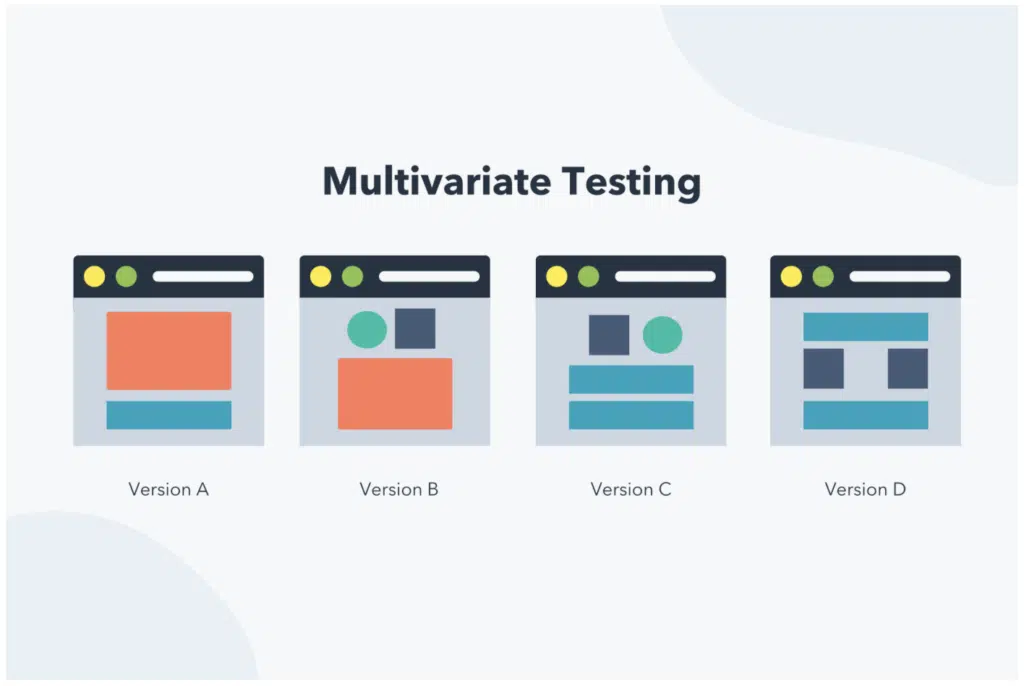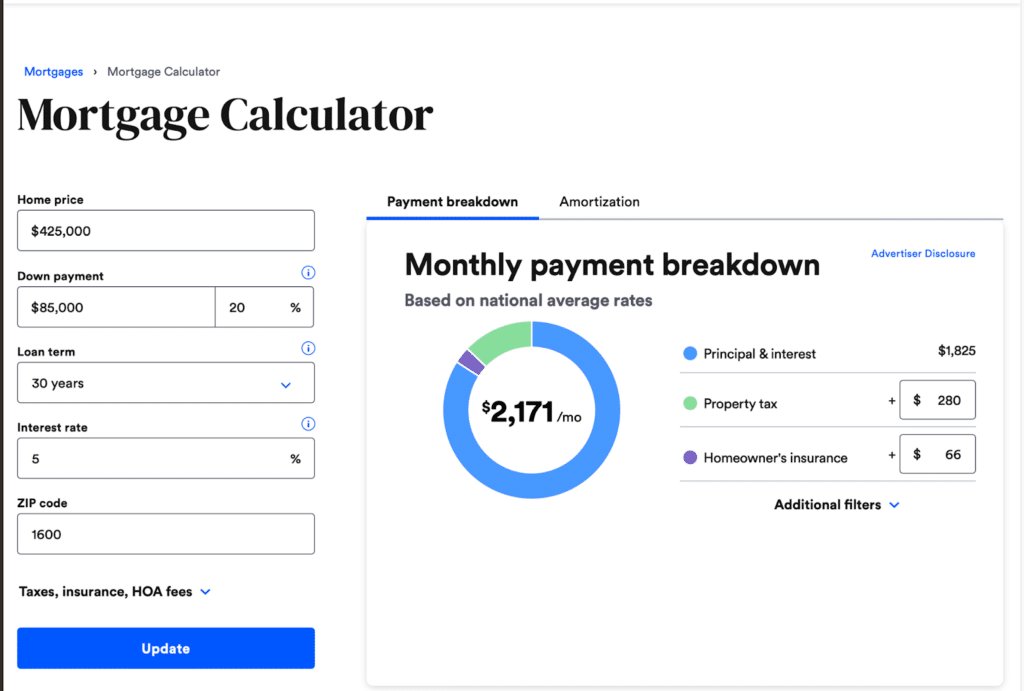A website does more than house your business online. It’s imperative for company branding, user engagement, and sales conversion. However, ask these questions:
- Does it look beautiful and work seamlessly?
- Does it resonate with your target users or visitors?
- Does it provide an amazing user experience (UX)?
To answer these critical questions above, examine various site elements and test different versions of them. That’s where multivariate testing (MVT) comes into play.
This page tackles what you ought to know about multivariate testing strategies. Experiment with various testing strategies in 2024. Get valuable insights directly from business leaders.
Read below.
Understanding Multivariate Testing for Websites
A well-optimized website works wonders for any business, from website traffic and customer engagement to lead generation and sales conversion. That’s why web designing is crucial for creating an aesthetically appealing and highly functional site.
Take the following facts and figures about web design:
- Nearly 60% of users prefer navigating ‘beautiful and well-designed’ websites to basic ones. (Adobe)

- Almost 95% of the visitors’ first impressions of websites are associated with designs (ResearchGate)
- Half of web users claim website design triggers their opinion about a brand. (PR Newswire)
- People redesign their websites to improve their conversion rate. (Good Firms)
The statistics above make it abundantly clear that web design is vital for business. But before designing your website, conduct a site audit and testing first—Employ MVT!
But first things first, what is MVT? Learn more about this in the next section.
What is MVT?
Multivariate testing involves running, examining, and analyzing variations of different elements on a web page. The goal is understanding which combination appeals to users and works best for your business. You can employ MVT for digital marketing, software development, and app creation, not only for web designing.
Look at the HubSpot image below, which clearly illustrates what MVT means:

Let’s put it in a simple analogy—say you’re starting a veggie salad business for health-conscious individuals.
Suppose you wonder what salad version customers will love the most and bring more profits to your business. In this case, you create four different versions. Each has a different mixture of vegetables, fruits, nuts, and herbs, not to mention dressing.
This works the same as MVT. You develop four variants of a particular web page on your site. Each has a different combination of elements like typography, layout, whitespace, color scheme, content, and call to action (CTA).
To further understand MVT, learn how it differs from the most popular testing below.
Multivariate versus A/B testing
There’s a line drawn between A/B testing and multivariate testing. Take note of the following:
- A/B testing involves creating, examining, and comparing two web page versions using the same elements. Your goal is to see which one works better than the other.
The A/B testing model is popular in business, and companies go as far as investing in testing software. Verified Market Research predicts its global market size could grow from $516.50 million in 2020 to $1249.57 million by 2028. It’s forecasted to achieve an 11.62% compound annual growth rate (CAGR).

- Multivariate testing entails testing more than two versions of a web page. Each version consists of different site elements, as opposed to A/B testing. This model gives you an idea of which version impacts your website most.
MVT is a complex form of testing. It examines multiple variables, demonstrating how elements interact with one another. Hence, it best suits advanced marketing testers for their businesses.
Discover the benefits of multivariate testing in the next section.
Why opt for MVT
MVT is best for a working website where site owners want to take it to the next level. It also suits top brands, big companies, and e-commerce platforms with high-performing websites.
The benefits of MVT are multifold. Here’s why you should employ this testing model for your business website:
- It measures website performance. A/B testing might be restrictive in most cases. MVT lets you test multiple versions and examine your site performance.
- It makes resource allocation efficient. MVT lets you focus on site elements that truly impact UX. You’ll only allocate resources to those that matter.
- It offers valuable data insights. MVT gives you more options but lets you prioritize the best version. Ultimately, you’ll make informed decisions for your web design.
- It improves the user experience. Of course, your ultimate goal is to provide your site visitors with the best UX. As an advanced testing model, MVT helps you optimize your website.
- It helps increase the conversion rate. MVT translates to a boost in sales. By optimizing your site and improving the UX, you’ll win more and more customers!
- It drives continuous improvements. Your website must keep up with technological advances, evolving industry trends, and changing consumer behaviour. Constant MVT can be instrumental to your long-term success.
Now, how do you get started with MVT? Read below.
How to start with multivariate testing
Now that you know the MVT benefits, it’s time to start your testing.
Let’s keep it straightforward, albeit the testing is more advanced and complicated.
But as a beginner, follow the key steps below.
- Identify a specific UX problem. Doesn’t your website look good and work on mobile devices? Does it take years for your page to load? Is it hard to navigate from one web page to another?
- Define your testing objectives. What do you aim to achieve from MVT? Is it to boost the customer engagement, generate more leads, or to convert sales?
- Set up variations for the MVT. How many versions can you think of for a particular web page? What elements are you going to incorporate for each version?
- Run the actual multivariate testing. It’s time to execute your MVT strategies and run the actual test. But while at it, you should observe, monitor, and measure your website performance.
- Analyze the MVT results. At this point, you are ready to evaluate the effectiveness of each variant. Which version helps you meet your MVT objectives and achieve your business goals?
- Use data insights for informed decisions. After data analysis and business reporting, you can decide which version to leverage for your website. Not only does it improve the UX, but it will also contribute to your business success.
In the next section, learn some effective MVT strategies for this year as shared by business leaders.
Expert Insights: Top Multivariate Testing Strategies in 2024
Now, you know what MVT is and how to run such testing. It’s time to capitalize on it for optimizing your website and improving UX. How do you go about doing that?
Expert business leaders share some of the effective MVT strategies for this year:
1. Conduct a comprehensive website audit
Morgan Taylor, Co-Founder of Jolly SEO, recommends auditing your website before running MVT testing.
Taylor explains, “Website audit involves examining how your site impacts users or visitors. It lets you identify areas for improvement, serving as a basis for your testing. Then, you can run your test to see how you can optimize your website.”
Taylor suggests inspecting the following site elements:
- Website structure: Are the elements streamlined, which doesn’t hurt the eyes at all?
- Site navigation: Is navigating from one web page to another easy and painless for your users?
- Loading time: Does it take forever for your website to load, making your visitors pissed off?
- Functionality: Does your website tick all the boxes of your usability metrics for the user benefits?
- User experience (UX): Do your site visitors or users have the best experience on your website?
- Content quality and relevance: Are the pieces of pieces helpful and relevant to your target audiences?
- Search engine optimization: Is your website optimized for search engines like Google and Bing?
- Mobile responsiveness: Does your website look good and work on mobile devices like phones and laptops?
- Site security and data privacy: Is your site prone to cyberattacks like phishing, malware, and denial-of-service (DoS) attacks?
2. Identify user pain points and challenges
David Gaglione, Founding Partner at PS212, suggests understanding your site users or visitors before the actual MVT.
Gaglione believes that the website exists to meet the user needs on the platform. “They visit your site to consume relevant content, engage with your business, or place order requests. What good is your website if it doesn’t provide value to your users at all.”
Before running MVT, Gaglione recommends identifying user problems. He mentions some of the most common ones as follows:
- Cluttered user interface (UI): Your website has a lot of clutter bombarded with pieces of information.
- Complex navigation: It’s challenging to go from one web page to another.
- Slow page loading: Your page takes more than eight seconds to load.
- Limited functionality: Your site has limited functions, like search fields, menus, and CTAs.
- Poor content quality: Your content doesn’t resonate with your target audience.
- Complicated checkout process: Many users stop at the complex checkout step, making it hard for you to reduce the abandonment rate.
- Intrusive ads and pop-ups: Site visitors easily and quickly get annoyed by ads and pops, making them bounce off the pages.
Mobile unfriendliness: Your website doesn’t work on mobile phones.

3. Define business goals and operational objectives
Shawn Plummer, The Annuity Expert CEO, cites the importance of business goals and multivariate testing objectives.
Plummer explains, “Always stem your MVT tactics from what your business hopes to achieve. Looking to attract more customers to your site and engage with them? Then, you can define and set the specific objectives for your testing.”
Below are some you might have:
- Company goals: MVT helps you optimize your website to meet these goals:
- To improve the user experience
- To increase online visibility
- To drive website traffic
- To boost user engagement
- To generate more leads
- To convert more sales
- To augment customer retention
- Operational objectives: Be specific with defining your goals for running MVT:
- To enhance user experience
- To increase search rankings
- To drive organic traffic
- To boost customer engagement
- To improve click-through rates (CTR)
- To reduce the bounce rate
- To acquire more leads
- To increase the conversion rate
4. Employ different MVT strategies
Linda Shaffer, Chief People Operations Officer at Checkr, discusses the three primary types of MVT.
Shaffer says that MVT is an umbrella methodology in itself. “Sure, it comes in three different types. However, employ a particular strategy that best suits your goals and needs. Otherwise, it defeats the purpose of running this test in the first place.”
That said, here are the three types of multivariate testing to consider:
- Full factorial testing is the most widely used among all MVT types. This basic methodology entails distributing site traffic to all testing variations equally. For example, if you have four different versions, each will receive one-fourth of the traffic.
- Fractional factorial testing entails exposing a fraction of all your testing variations to the site traffic. Suppose you have eight versions of a web page, each with different site elements. In that case, you only allow traffic to four variations.
- Taguchi testing is an old and classic MVT type. This non-conventional methodology involves optimizing web design to reduce variability and improve performance. Through this, you minimize your testing time and traffic requirements.
5. Use technology for testing automation and data analysis
Jerry Han, CMO at PrizeRebel, underscored the importance of technology in today’s business landscape.
Han recommends leveraging technology for multivariate testing. “This practically applies to your multivariate testing. Digital tools and technologies can make your testing more efficient, productive, accurate, and results-oriented. Consider investing in software apps for your MVT implementation.
You can leverage the following technologies for your MVT:
- Automation: This technology automates some of the tasks involved in MVT, whether developing variants or integrating site elements. It cuts down manual work and speeds up the entire process.
- Artificial intelligence: AI is the simulation of intelligence into technologies. Think of AI-powered chatbots assisting users on websites—amazing, right? You can leverage AI for MVT to make your site technologically advanced.
- Machine learning: ML is adept at analyzing data based on patterns and trends and making informed decisions. It can aid in data analysis and decision-making for your MVT.
- Extended reality (XR): Virtual reality (VR) and augmented reality (AR) are examples of XR technology. They have become increasingly prominent on many websites out there. Consider using XR as part of your multivariate testing!
5. Focus on personalized and interactive content
Hardy Desai, Founder of Supple, highlights the content value of any given website.
Desai justifies that content remains king in the digital world. “No matter how aesthetically appealing and user-friendly it is, your site won’t matter if it doesn’t provide value at all. You must produce and publish valuable content relevant to your target audience.”
When running an MVT for web design, Desai suggests prioritizing content in all formats and lengths. Here’s how to personalize and make them more interactive:
- Content personalization:
- Email content: Integrate emails into your website to inform, educate, and update your prospects and customers.
- Live chat responses: Add this feature to your site, whether AI-powered chatbot or real customer service representatives (CRRs). Of course, respond to them with personalized messages.
- Social media content: Link to your social media pages and share content on these pages to create link juice and foster more engagement.
- User accounts: Enable your site visitors to create user accounts and, from there, engage with them using personalized content.
- Interactive content:
- Surveys and polls: Website polls and surveys are the most popular forms of interactive content ideal for establishing a customer feedback loop.
- Quizzes and assessments: Let your audience participate in various tests and evaluations on your website to spur interactions.
- Interactive games: Allow users to enjoy gamified content and platforms on your website to encourage engagement.
- Virtual tours: Leverage XR to set up virtual tours on your site for a more immersive experience.
Calculators and tools: Make tools readily handy on your website, such as the mortgage calculator below:

7. Set up a multichannel testing across platforms
Tom Golubovich, Head of Marketing & Media Relations at Ninja Transfers, recommends conducting multichannel MVT.
Golubovich suggests employing customer journey mapping. “Your customers go through various stages in their journey, from awareness and education to negotiation and sale. They also use different channels and platforms connected to your website. Make the customer journey as seamless as possible.”
Here’s how to conduct multichannel testing as part of your MVT:
- Website: Set up various site variations to see which one offers the best UX.
- Email: Allow prospects and customers to send emails via your website itself.
- Online chat: Incorporate online chat, such as AI-integrated chatbots, for customer service.
- Social media: Leverage social media for conversion by linking to your pages.
8. Consider the mobile-first approach for testing
Jim Pendergast, Senior Vice President at altLINE Sobanco, suggests the mobile-first approach for multivariate testing.
Pendergast explains, “In today’s digital landscape, people access the internet using their mobile phones. As such, optimize your website for these devices so your pages appear prominently on the search results for relevant searches. More importantly, your site looks good and works well on mobile devices.”
Mobile devices make up half of the web traffic. Statista reports that they comprised 58.67% of website traffic worldwide last year. Look at their global traffic from 2015 to 2023 below:

Final Words
The MVT model is indeed effective and helpful in business. Not only does it aid in web designing, but it also helps in software development and app creation.
For website optimization, MVT proves beneficial in more ways than one. For one, it assists in performance measurement, resource allocation, and decision-making. It also helps improve the UX and increase your conversion rate. Ultimately, it drives continuous site improvements for business growth and success!
Consider the MVT strategies shared by business experts above, and you’ll establish a highly appealing, performing, and converting website!



